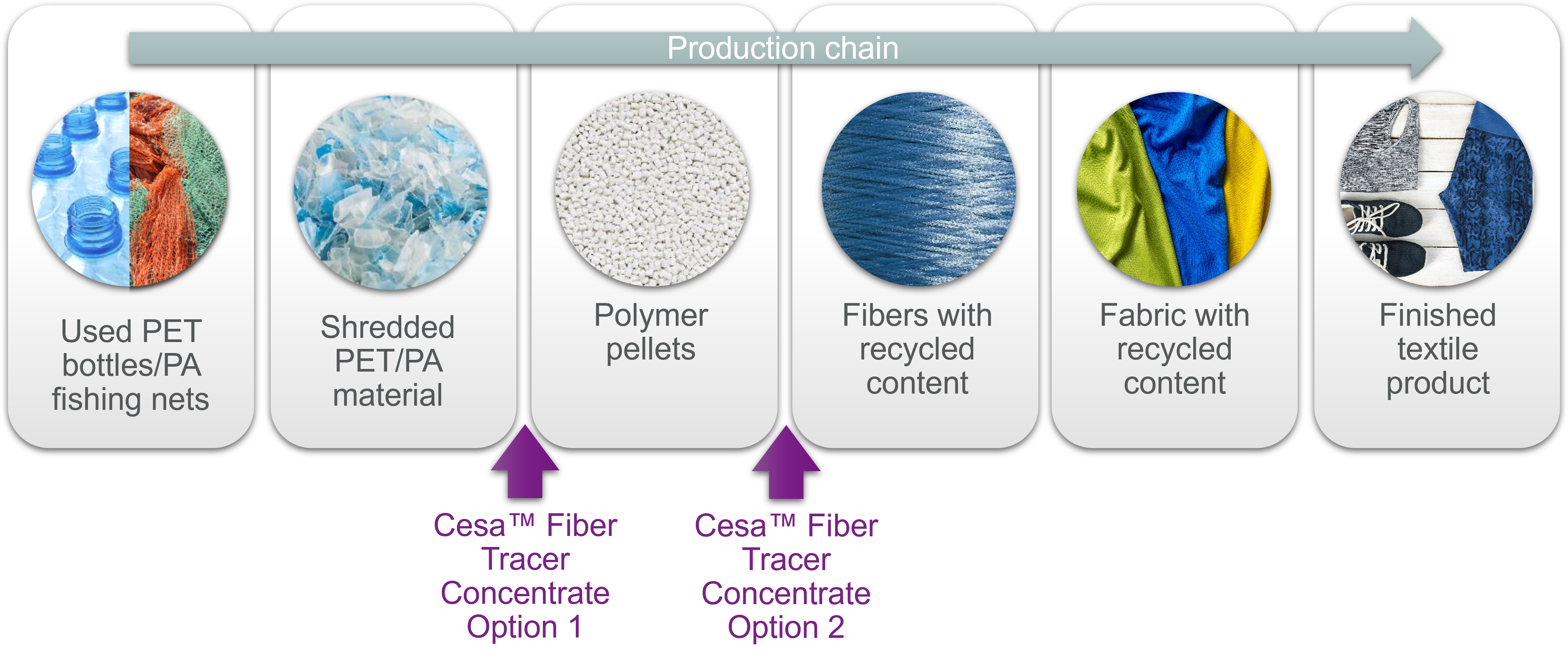Why is it important to trace the origin of fibers?
The textile industry is constantly incorporating more recycled materials to meet the growing demand to reduce the industry’s carbon footprint. In synthetic fibers, recycled polyethylene terephthalate (PET) material from plastic bottles was the first recycled content used in textile products such as sportswear and technical textiles. Today, recycled polyamide (PA) from items like old fishing nets is also increasingly used in sportswear, swimwear, and other garments. Major brands often use these two recycled polymer materials in product lines and market them accordingly on product labels and descriptions. However, the stark increase in sustainability claims leads to concerns about potential greenwashing by sustainability associations and consumer groups. Greenwashing is the act or practice of making a product, policy, or activity appear more eco-conscious or less environmentally damaging than it is. Including tracers within textiles can make it possible to confirm the origin of yarns from a specified fiber manufacturer’s production stream, which in turn would support the label's claims of including recycled content.
What are tracers, and how do they work?
Tracers, also called taggants, are unique substances included in a material to tag or identify it. The substances can then be identified through specific testing. Because they are unique to a manufacturer and product line, the confirmation of their presence in the material will substantiate the origin of the material to the specified manufacturer. Taggants can be used for different materials and different industries. Their use in the textile industry is currently rare. However, there are already a few existing technologies with varying levels of traceability available in the market, and the demand is expected to grow.
Avient’s Cesa™ Fiber Tracer Concentrates
Cesa™ Fiber Tracer Concentrates are specifically developed for extruded fibers, especially polyester and polyamide. Like all Avient’s fiber concentrates (a.k.a. masterbatches), they are typically incorporated into the fibers using spin-dying technology during yarn manufacturing. (Check out our technology guide here to learn more about spin-dyeing technology.) For yarns produced with recycled polymer content, the tracers can also be added to the shredded PET/PA material before it’s extruded into polymer pellets, which can offer more flexibility for yarn producers.

One aspect that sets Cesa Fiber Tracer Concentrates apart from other more complex taggant technologies on the market is that they can provide efficient, medium-level traceability with low investment because no additional equipment is required. They are formulated without hazardous raw materials and are highly compatible with fiber-grade polyester and polyamide, including recycled content. Our fiber experts can work closely with customers to provide unique tracer solutions adapted to their needs and guide them through their traceability projects.
You can learn more about the tracer concentrates here or about our other color and additive solutions for fibers here.
